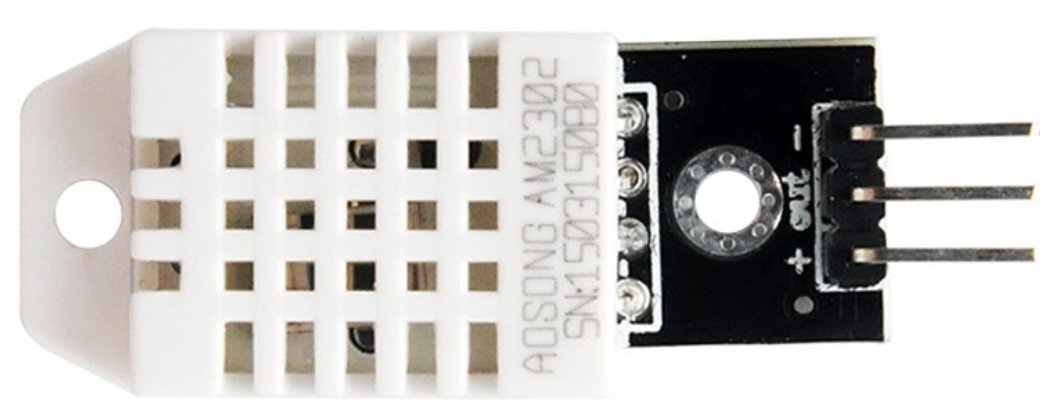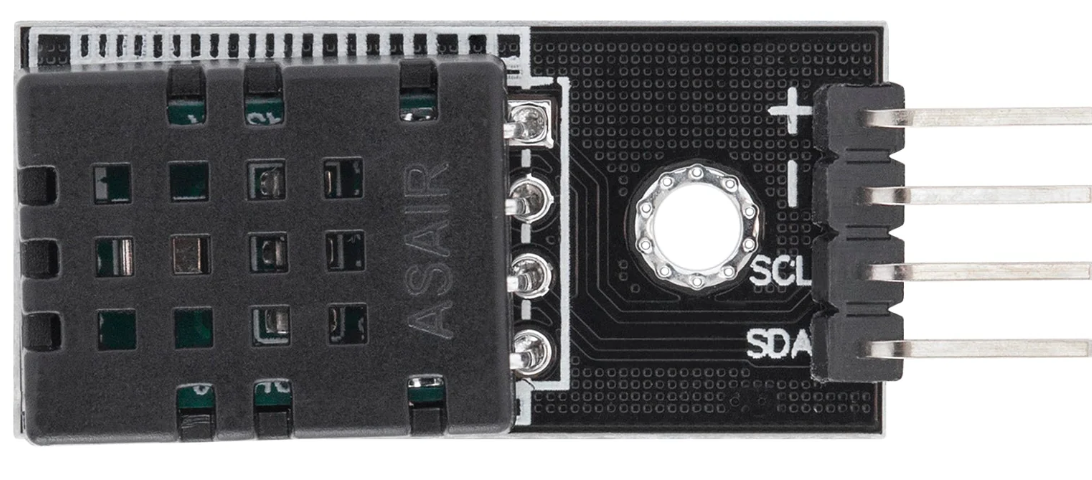In this chapter, we will explore Digital Humidity and Temperature (DHT) sensors, which are essential components for measuring environmental conditions in electronic projects. We’ll cover three popular variants: DHT11, DHT20, and DHT22.
Temperature and humidity measurements are crucial for many applications, from simple home weather stations to complex industrial monitoring systems. These sensors provide digital outputs that can be easily integrated with microcontrollers and other electronic devices.
You will learn the following in this chapter:
- How different DHT sensors work and their specifications
- Understanding temperature measurements and unit conversions
- How humidity is measured and interpreted
- The internal workings of DHT sensors
DHT Sensors
The name DHT stands for Digital Humidity and Temperature sensor. DHT11, DHT20, and DHT22 are small sensors that measure temperature and humidity. They are often used in DIY electronics projects, home automation, and weather monitoring.
DHT11

The DHT11 is a basic temperature and humidity sensor that measures temperatures between 0°C and 50°C and humidity levels from 20% to 90%. It provides data using a single-wire digital protocol. While it offers lower accuracy compared to more advanced sensors like the DHT22, it’s suitable for simple projects like monitoring indoor temperature and humidity. It’s commonly used in beginner electronics and DIY projects where high precision is not critical.
DHT22

The DHT22 is a more advanced temperature and humidity sensor compared to the DHT11, offering a wider measurement range and higher accuracy. It measures temperatures from -40°C to 80°C and humidity levels from 0% to 100%, making it suitable for a broader range of environments. The DHT22 provides data through a single-wire digital protocol, offering reliable performance for projects that require higher precision, such as weather stations or greenhouse monitoring.
DHT20

The DHT20 is an advanced temperature and humidity sensor that offers higher accuracy and a wider measurement range compared to the DHT11 and DHT22. It measures temperatures from -40°C to 80°C and humidity levels from 0% to 100%, with improved precision and stability. Unlike the DHT11 and DHT22, the DHT20 uses an I²C interface for data communication, allowing for faster and more reliable data transfer. This makes it a great choice for projects requiring precise environmental monitoring, such as weather stations or indoor climate control systems.
Comparison of DHT Sensors
Below is a detailed comparison of their features, specifications, and applications:
| Feature | DHT11 | DHT20 | DHT22 (AM2302) |
|---|---|---|---|
| Temperature Range | 0 to 50°C | -40 to 80°C | -40 to 80°C |
| Temperature Accuracy | ±2°C | ±0.5°C | ±0.5°C |
| Humidity Range | 20% to 90% RH | 0% to 100% RH | 0% to 100% RH |
| Humidity Accuracy | ±5% RH | ±3% RH | ±2% RH |
| Operating Voltage | 3V – 5.5V | 2.2V – 5.5V | 3V – 5.5V |
| Communication | One-wire (Digital) | I2C (Digital) | One-wire (Digital) |
| Sampling Rate | 1 Hz (1 sec) | 5 Hz (0.2 sec) | 0.5 Hz (2 sec) |
| Power Consumption | Low | Very Low | Low |
| Price | Cheapest | Higher | Higher |
| Application | Basic DIY, Hobby | Precise Industrial Use | Weather Monitoring |
Temperature
The DHT11 works only between 0 to 50°C, while DHT20 and DHT22 can handle -40 to 80°C.
This means DHT11 is not suitable for:
- Cold places (like winter or a fridge)
- Very hot environments (like extreme summer heat)
If you need a sensor for freezing or very hot conditions, use DHT20 or DHT22 instead.
Celsius (°C)
Celsius is used in most of the world because it aligns with the metric system, making it easier for scientific use and international communication.
The Celsius scale is based on water’s freezing and boiling points at standard atmospheric pressure:
- 0°C = freezing point of water
- 100°C = boiling point of water
Fahrenheit (°F)
Fahrenheit was historically used in the United States because it was designed to be more practical for everyday life, with smaller increments between degrees, which made it easier to estimate temperature differences.
The Fahrenheit scale was designed to use specific reference points:
- 32°F = freezing point of water
- 212°F = boiling point of water
Conversion
You can convert temperatures between **Celsius (°C), Fahrenheit (°F) using these formulas:
1. Celsius to Fahrenheit (°C → °F)
°𝐹=(°𝐶×9/5)+32
Example: 25°C → (25 × 9/5) + 32 = 77°F
2. Fahrenheit to Celsius (°F → °C)
°𝐶=(°𝐹–32)×5/9
Example: 77°F → (77 – 32) × 5/9 = 25°COverview
Humidity
Relative Humidity (RH)
Relative humidity is the amount of water vapor in the air compared to the maximum amount the air can hold at a given temperature. It is expressed as a percentage (%RH).
What Does Higher RH Mean?
When RH (Relative Humidity) reaches 100%, the air is full of moisture and can’t hold any more water vapor. This can cause fog, dew, or rain, depending on where it happens.
- Near the ground → Fog or dew may form.
- In the clouds → If the moisture turns into droplets, it can lead to rain or snow.
If the temperature drops, the extra moisture in the air turns into tiny water droplets, creating fog, dew, or even rain.
How DHT Sensor works
Inside a DHT sensor, there are three main parts: a humidity sensor, a temperature sensor and a MCU.
Humidity Sensor
The humidity sensor works with a special material that absorbs water from the air. When it absorbs water, it changes its electrical properties, which the sensor uses to calculate the humidity level.
Temperature Sensor
The temperature sensor uses a small device called a thermistor. As the temperature changes, the resistance of the thermistor also changes, which helps the sensor measure the temperature.
Microcontroller (MCU)
Inside the sensor, there is a tiny microcontroller. It takes the raw data from both the humidity and temperature sensors, converts it into digital data, and sends it out. For DHT11 and DHT22, the data is sent using a single-wire digital protocol. The DHT20 uses I²C communication, which is faster and more reliable.
Working Process
-
Power-Up:
The sensor is powered via a voltage source (typically 3.3V or 5V). -
Sensing:
The humidity sensor measures capacitance changes.
The temperature sensor measures resistance changes. -
Data Conversion:
The internal ADC converts the analog measurements into digital data. -
Data Transmission:
The MCU formats and transmits the data via the specified protocol (single-wire or I²C).
By integrating all these components into a single package, DHT sensors provide a compact and user-friendly solution for temperature and humidity sensing.
Summary
This chapter provides a comprehensive understanding of DHT sensors, their capabilities in measuring temperature and humidity, and how they operate internally.
The concepts covered here are fundamental for environmental monitoring and can be applied in various projects, from simple home automation to complex industrial applications.

